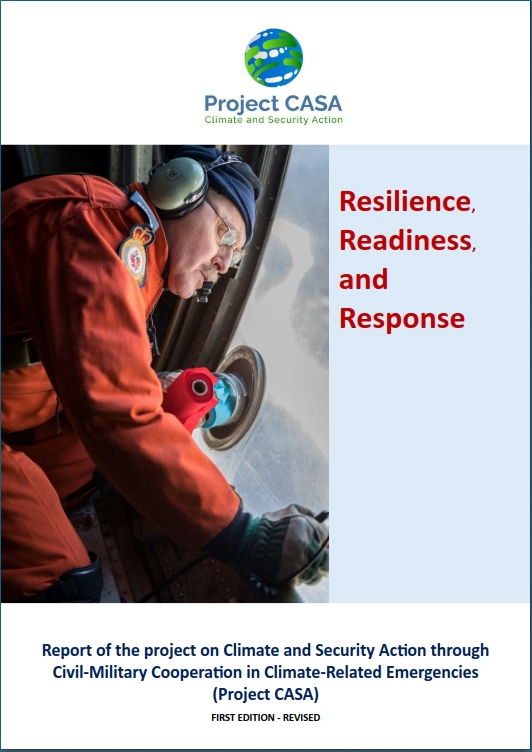Resilience, Readiness, and Response

Report of the project on Climate and Security Action through Civil-Military Cooperation in Climate-Related Emergencies (Project CASA)
As climate emergencies beset communities with increasing frequency and severity, national militaries play a key role, working alongside civilian responders and often facing calls for greater involvement when civilian capacity is strained. Whether militaries should be involved in preparing for and responding to climate emergencies is a matter of considerable debate, and views vary depending on the context, country, political culture, and whether involvement is within national borders or beyond. What is clear, however, is that national militaries are already engaged in these roles and, with the rising number of climate emergencies globally, the pressure for military involvement in such emergencies is also likely to increase when civilian agencies cannot respond at the speed or scale required.
Despite these challenges, there has been very little systematic cross-national information on country approaches to military involvement in climate emergencies. Project CASA seeks to help fill this gap by assessing the nature, extent, and impact of military involvement in such emergencies across a range of countries. It has done so by consulting with government and military officials in countries in NATO and beyond to compile information on their approaches to engaging the military in preparing for and responding to climate emergencies, as well as the impacts this has had on force structure and operations.
This project’s country profiles and dataset provide new comparative information on core frameworks shaping the use of national militaries in domestic and cross-border operations for civil protection during climate emergencies. This includes information on countries’ current legal and policy frameworks, operational frameworks, military training, delineation of military and civilian roles, and international coordination. It also includes their perspectives on the potential advantages and disadvantages of increasing military involvement in civil protection, as well as the comparative advantages of civilian and military agencies. The aim is to understand the increasing demands placed on national militaries amid expanding climate emergencies globally and to share the range of approaches countries are using to manage these.
>>> Press Release / Report Summary >>>
| Author(s) / Editors(s): | Ronald A. Kingham and Dr. Ashley McIlvain Moran |
| Publisher(s): | Environment & Development Resouce Centre (EDRC) |
| Place Published: | Brussels / The Hague |
| Date / Journal Vol. No.: | 30 July 2025 |
| Pages: | 152 |
Report Cover Image credit: Sergeant André Hotton, a search and rescue technician, prepares to release marker streamers from a CC-130 Hercules aircraft on a 2018 exercise. PHOTO: 14 Wing / Government of Canada News Article / October 13, 2020